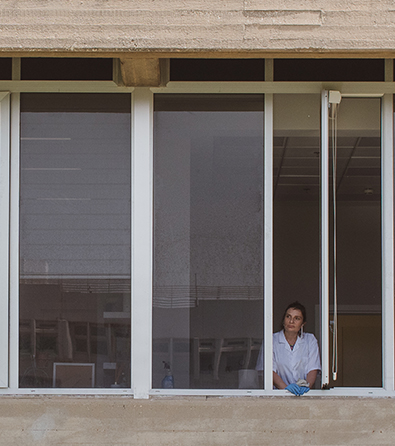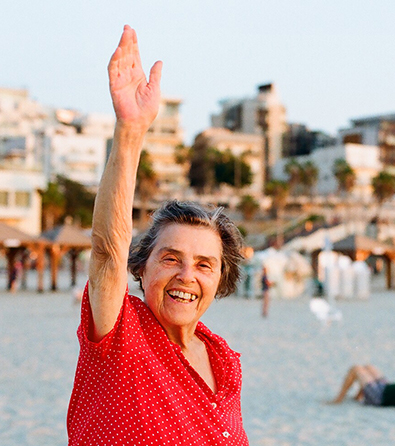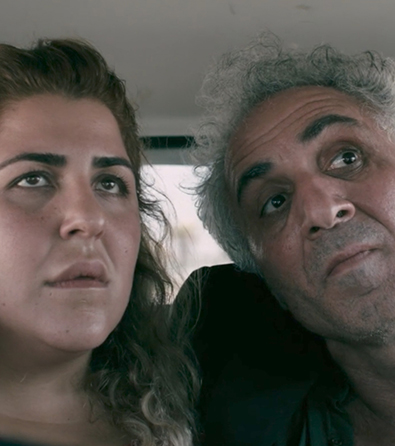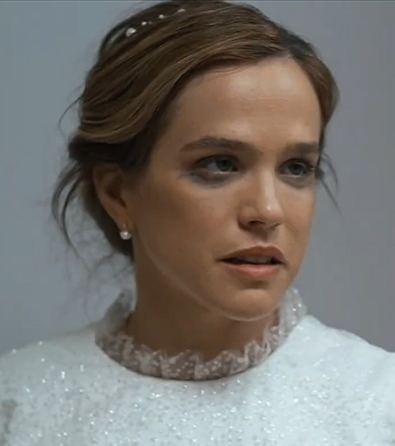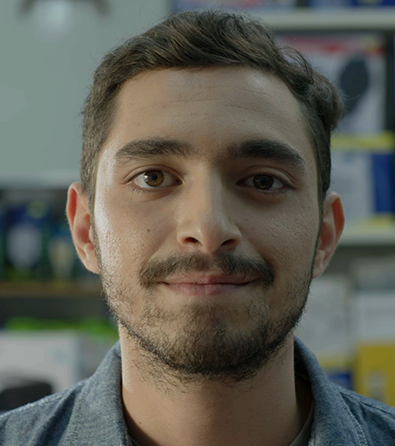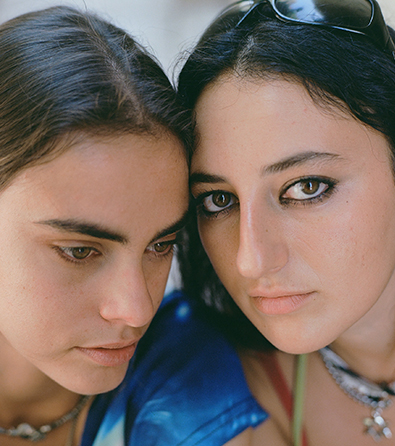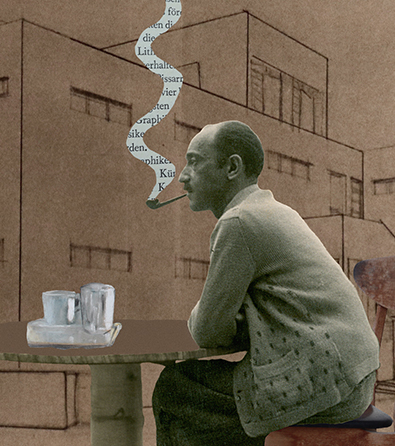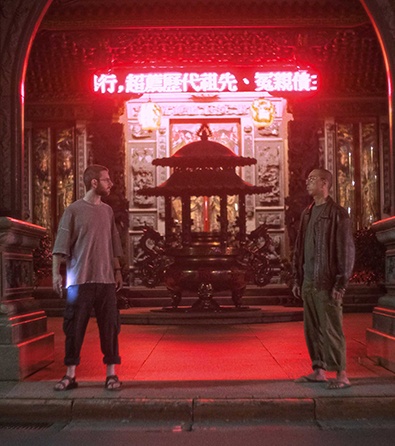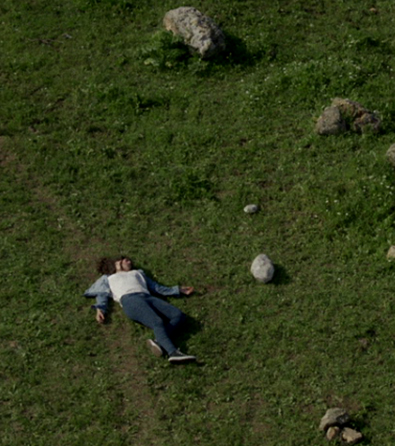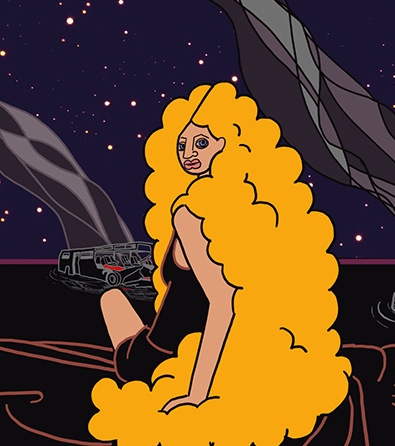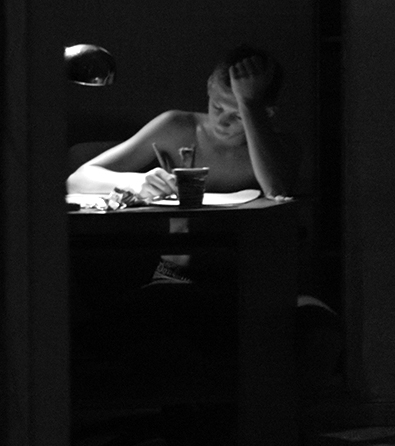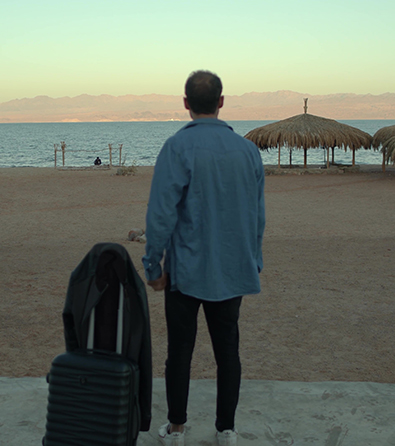The short documentary What Are You Looking At? (14 minutes) is available at the top of the page.
* To watch this film, please approve YouTube/Vimeo cookies via the blue cookie icon at the bottom left of the screen.
What Are You Looking At? is a short, intimate, and thought-provoking documentary directed by Liberty Smith. The film portrays the life and work of Angela Charles, a successful visual artist and curator coping with vision loss. For over a decade, Angela concealed the state of her eyesight, which deteriorated year after year, out of constant fear of how the art world and its patrons might react to the gradual loss of a key skill central to her craft. The film quickly delves into her “coming out” as a “blind painter” and the transformation in her personal and artistic identity, ultimately addressing the film’s central theme: how we view art and the expectations that exist between viewers, artists, and art itself.
The film’s title invites us to reflect on our relationship with visual art and the assumptions we make about artists and their skills. Angela’s work is deeply rooted in her memories, with her paintings reflecting an emotional and sensory connection to her surroundings. The irony of being a painter with severely impaired vision is not lost on the audience or Angela herself. Her humor and openness are central to the film’s narrative. Despite her visual impairment, Angela continues to paint, seeking to rediscover herself both as an established artist and a mature individual. Through her journey, the film raises thought-provoking questions about the act of seeing and what it truly means “to see.”
Angela’s story is conveyed with humor, sharpness, and honesty, honing the film’s focus on personal growth as much as it explores the subject of disability. She was diagnosed with retinal degeneration, a progressive eye condition that first appeared as retinitis pigmentosa. As her vision worsened over the past four years, Angela reached a pivotal moment: either continue concealing her condition or embrace it. Her decision to publicly identify as a blind painter was influenced by personal and professional considerations, ultimately leading to a solo exhibition and the creation of this documentary.
Smith’s direction blends audio-visual storytelling in ways that challenge conventional documentary filmmaking. The film interlaces multiple voices, including Angela’s, her iPhone’s (voiced by ‘Daniel’), and AI-generated audio that questions the limitations and power of language in describing visual art. This fusion of voices becomes central to the film’s message: sight is not the only way to experience or engage with art. The documentary invites viewers to reconsider the hierarchical perception that often elevates the visual component as the most crucial in visual art. In Angela’s case, however, memory, emotion, and touch assume equally significant roles.
One of the most captivating aspects of the film is how it intertwines Angela’s personal and artistic evolution. Throughout the documentary, we observe her shift from an artist who meticulously documented her surroundings to one who now relies on memory. In the past, she sketched and noted colors with precision, but today, her approach is more intuitive, creating work that is emotionally charged and less focused on exact form. This transformation is particularly striking in her latest body of work, marked by a lighter color palette and bolder compositions, reflecting not only her deteriorating vision but also her increasing confidence in embracing the unknown.
Angela’s exhibition, as depicted in the film, features paintings inspired by her memories of growing up in a coastal town. These works are raw and distinctively textured, created on aluminum and wood panels—materials that allow her to feel the tactile quality of her brushstrokes. Technology also plays a pivotal role in her creative process: she uses a mobile app to identify colors and organize her workspace, enabling her to continue painting despite her visual limitations. This aspect of the film underscores how technology can extend the artist’s capabilities, opening up new possibilities for creative expression.
The emotional core of the film lies in Angela’s vulnerability. For years, she carried what she called her “guilty secret,” hiding her guide dog and concealing her blindness from the art world, fearing her condition might discredit her work or distance her audience. The documentary captures Angela’s journey toward self-acceptance and her decision to be open with those around her and her patrons. Through candid interviews and behind-the-scenes footage of Angela at work, we see how her honesty not only freed her but also infused her craft with new depth and dimension.
The film delves into Angela’s challenges as an artist and a visually impaired woman while also tackling the broader issue of the art world’s lack of inclusivity toward artists with disabilities. Angela is dedicated to shifting this narrative, advocating for greater accessibility in galleries and museums. Her experience highlights the need to expand our understanding of “artistic ability” and dismantle the outdated perceptions that restrict how we perceive both art and artists.
The themes of visual impairment and artistic identity explored in the film strongly resonate with those in Leos Carax’s 1991 film “The Lovers on the Bridge” (Les Amants du Pont-Neuf), which also tells the story of Michèle, a painter facing the gradual loss of her vision. Both What Are You Looking At? and “The Lovers on the Bridge” delve into the emotional and psychological challenges confronting visual artists losing their sight, raising profound questions about the role of vision in art and how these artists redefine their relationship with their craft. However, while “The Lovers on the Bridge” offers a romantic and melancholic portrayal of artistic decline and isolation, What Are You Looking At? takes an empowering and hopeful approach, celebrating Angela Charles’s choice to embrace her blindness and continue creating art.
Michèle’s blindness in “The Lovers on the Bridge” is a source of profound despair, and her artistic decline mirrors her emotional unraveling. The film equates the loss of sight with the loss of identity, especially for Michèle, whose visual art is inseparably linked to her sense of self. In contrast, Angela’s journey is one of reinvention rather than decline. While Angela faces moments of frustration and fear, the film highlights her resilience and adaptability as she discovers new ways to engage with her art and the world around her. Instead of viewing her blindness as an end, Angela reframes it as a transformative experience, one that deepens her connection to her craft.
The key distinction between the two films lies in how each artist navigates the expectations imposed by society and the art establishment. In “The Lovers on the Bridge”, Michèle withdraws from the world, fearing judgment and pity from those around her. Her blindness becomes an isolating force, both personally and professionally. Rejecting the notion of being perceived as vulnerable, and disabled, she ultimately sacrifices her creative ambitions. In contrast, What Are You Looking At? presents a different path: a direct confrontation with the art world. After years of concealing her blindness, Angela openly embraces her identity as a blind painter, using her platform to advocate for greater inclusivity for artists with disabilities. Angela’s openness starkly contrasts with Michèle’s secrecy; while Michèle seeks to evade the stigma surrounding disability in the creative field, Angela works to dismantle it.
Both films explore the sensory experience of painting and how the artists adapt to the decline of their vision, the sense they rely on most. Michèle’s struggle with blindness in “The Lovers on the Bridge” leads to a feeling of helplessness as she gradually loses the ability to translate her vision onto the canvas. Her work, deeply connected to her visual capacity, becomes impossible as she approaches complete blindness. In contrast, Angela finds ways to harness her remaining senses, technology, and memory to continue creating. Her new work, characterized by a lighter palette and bolder techniques, reflects her evolving perspective, standing in direct contrast to the loss and nostalgia Michèle experiences in Carax’s film.
Memory also serves as a unifying theme between the two films. In “The Lovers on the Bridge”, Michèle clings to her memories of vision and her ability to paint, and as those memories fade, so does her hope for the future. Her artworks become reflections of the past—distant, irretrievable representations. In contrast, Angela’s paintings are fueled by emotional and sensory memories, rather than her current visual perception. These memories enable her to create deeply personal work. Her reliance on memory transforms into a source of strength, driving her artistic process even as her vision continues to deteriorate.
Both films invite us to rethink the role of vision in art and pose the broader question: what does it truly mean to see?
